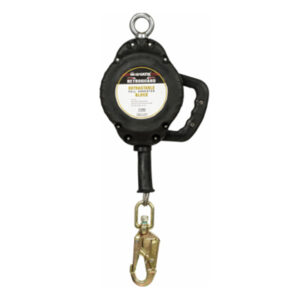Introduction: The “Performance” We Always Ignore
In the world of automotive enthusiasm, we are obsessed with “power.” We talk in a language of horsepower, torque, and 0-100 km/h times. We revere the engine. We celebrate the “whoosh” of a turbocharger. We spend thousands on engine tuning and exotic exhausts, all in a relentless pursuit of “more power.” But in this obsession, we are ignoring the single most important, and most impactful, part of the entire performance equation. We are ignoring the “fulcrum” on which all that power rests: the wheels.
To the average driver, a wheel is just “a rim.” It is a “cosmetic” item, a piece of automotive jewelry chosen for its “look.” This is the single biggest misunderstanding in vehicle dynamics. The wheel is not “jewelry”; it is a complex, load-bearing, physics-defining component. It is the “boot” on the end of your car’s “leg,” and its weight, strength, and balance dictate everything—your acceleration, your braking, your handling, and the comfort of your ride. Understanding this physics is the key to unlocking your car’s true potential.
The “Heavy Boot” Problem: Unsprung Mass Explained
To understand this, we must first talk about a concept that engineers live by, but which most drivers have never heard of: Unsprung Mass. “Sprung Mass” is the part of your car supported by the suspension (the body, the engine, you). “Unsprung Mass” is everything below the springs—the brakes, the tires, and, most importantly, the heavy wheel itself. Now, imagine trying to run in a pair of light, sleek running shoes. It’s easy, fast, and agile. Now, imagine strapping a 10kg “heavy boot” to your foot and trying to run. What happens?
You can’t react. Your “heavy boot” slams into the pavement with every step, and it lags behind when you try to lift it. This is exactly what a heavy wheel does to your car. Your suspension’s job is to keep the tire in constant contact with the road. When a light wheel hits a bump, the shock absorber can instantly push it back down, “sticking” it to the pavement. But when a heavy wheel hits a bump, its own inertia causes it to “crash” over the bump, then “bounce” or “chatter” in the air for a split second, because the shock absorber simply cannot control its “heavy boot” mass.
This is the “shudder” you feel on a rough road. This is the “crash” you feel when you hit a pothole in Dubai. This is the “loss of grip” you feel in a high-speed corner, as the “bouncing” tire “skips” across the tarmac. A heavy wheel destroys your ride comfort and cripples your handling. Lighter wheels are the single biggest upgrade you can make to your car’s “feel.”
The “Flywheel” Effect: The Hidden Burden of Rotating Mass
This is only half the story. The wheel is not just an “up-and-down” mass; it is a “spinning” mass. This is the second law of physics we must consider: Rotating Mass. Think of your heavy wheel as a “flywheel.” A heavy flywheel takes a huge amount of energy to get spinning, and a huge amount of energy to stop from spinning.
This is a “parasitic” drag on your engine. A significant portion of the horsepower you paid for is not being used to move your car forward; it is being “stolen” just to spin up those heavy, decorative wheels. This is why a simple wheel upgrade can make a car feel dramatically faster. Lashing for a lighter wheel is like “freeing up” horsepower you never knew you had.
But the real “killer” is on the other side of the equation: braking. That heavy, spinning flywheel has massive inertia. It wants to keep spinning. Your brakes must now fight a “two-front” war: they must stop the 2,000kg car, and they must also stop the 20kg “flywheel” at each corner. This is why a heavy wheel dramatically increases your braking distance. It overheats your brake pads and rotors, leading to that terrifying “brake fade” you feel after a hard stop. Lighter wheels don’t just “accelerate” faster; they “stop” faster and safer.
The “Wheel” in Tire & Wheel Services (The Pro’s Duty)
This is why, at a specialist garage, our job is not just “to fix things.” Our job is to be “diagnosticians” of vehicle physics. When a customer comes to us, they often think Tire & Wheel Services is just a simple “patch” for a puncture. They are often surprised when we start talking about the wheel itself, but it is our duty to do so. The “wheel” and the “tire” are not two separate things; they are a single, balanced “assembly” that must work in perfect harmony.
The most common, and most misunderstood, part of this is Wheel Balancing. A cheap, “bubble” balance is useless. A professional dynamic balance is the minimum. We spin the wheel at high speed to find both the “hop” (a static, up-and-down imbalance) and the “wobble” (a dynamic, side-to-side imbalance) and apply weights to counteract it. An unbalanced wheel is not just a “vibration”; it is a destructive force, sending “jackhammer” vibrations into your wheel bearings and suspension components, tearing them apart.
But the “pro” tool, and the one that separates a specialist from a “tire shop,” is the Road-Force Balancer. This is our “MRI” machine. It doesn’t just “spin” the wheel; it presses a large, heavy roller against the tire while it spins, simulating the force of the road. This is the only tool that can find the “invisible” problems: a “stiff spot” in the tire’s sidewall, or a “high spot” (run-out) in the wheel rim itself. This is how we solve the “vibration mystery” that five other garages couldn’t fix.
The Aftermarket Trap: The “Replica” Wheel and the 140 km/h “Explosion”
Nowhere is this “physics-be-damned” attitude more dangerous than in the UAE’s vast “replica” wheel market. You see a set of stunning, 5,000-Dirham “BBS” or “Vossen” wheels. Then, you see an identical-looking “replica” set for 1,500 Dirhams. This is a “trap” that can be, and often is, lethal.
Why is it cheap? It is not the same wheel. A high-end wheel is “forged” (like a blacksmith’s hammer) or “flow-formed,” making it incredibly light and strong. A cheap “replica” is “cast”—molten aluminum is poured into a mold. This process is cheap, but it creates a wheel that is brittle, porous, and heavy. The manufacturer has to make the wheel thicker just to give it any strength, which means you are actually buying a wheel that is heavier than your factory-original one. You have just paid to make your car slower, less comfortable, and less safe.
The “catastrophe” happens on Sheikh Zayed Road. You hit a small piece of road debris or a “gator” (a tire tread). A high-quality “forged” wheel will absorb this impact and bend. A cheap, brittle “cast replica” wheel will shatter. It cracks, explodes, and causes an instant, catastrophic blowout at 140 km/h. This is not a “bargain”; it is a life-threatening gamble.
The “Bent Rim” Fallacy: A Repair That Isn’t
What, then, of the “bent” high-quality wheel? A driver will feel a “wobble,” bring it in, and ask, “Can you just ‘bang it out’?” This is the final area where a specialist must hold the line. An aluminum alloy wheel is not a steel wheel. You cannot just “bang it” with a hammer, or even heat it up with a torch and bend it back.
The moment an alloy wheel is “bent,” its molecular structure is compromised. “Cold-working” it (bending it back) creates micro-fractures that are invisible to the naked eye. “Heating” it ruins the “heat-treat” that gives the alloy its strength. The wheel looks round, but it is now a ticking time bomb, with a “soft” or “cracked” spot that will fail under the next major stress. A “curb rash” can be “repaired” cosmetically. A structural bend in a wheel, in 99% of cases, condemns it. A specialist will tell you this truth, while a “cheap” shop will take your money, “bang it straight,” and put your life at risk.
Conclusion: Your Wheels Are the “Foundation”
Your engine’s power is useless if it can’t get to the road. Your brakes are useless if the wheel won’t “stick.” Your suspension is useless if it’s trying to control a “heavy, bouncing boot.” Your wheels are not “jewelry.” They are the foundation of your entire car. They are the single, most important component that dictates “how your car feels.”
This is why, at a true specialist garage, we are “obsessed” with them. We understand the physics. We have the “Road-Force” tools. And we have the integrity to tell you the truth about a “dangerous replica” or a “condemned” repair. Before you chase “more power,” talk to a specialist about your “foundation.”



